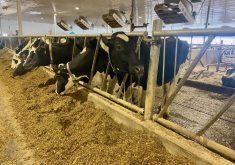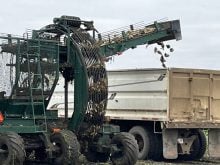Farmers and their families have a lot of control over their exposure to chemicals, concludes a scientist who has just finished a study of how pesticides are applied in the real world.
John Acquavella, who works for Monsanto, one of six agribusiness firms funding the study, said it is “the most comprehensive assessment of farm family exposure to date.”
Speaking in a telephone news conference Oct. 7, he said the $2 million research project studied the urine of 95 farm families, or 372 people, in Minnesota and South Carolina before and after applying three common chemicals – 2,4-D, Roundup and Lorsban. The results showed that while the farmers who applied the chemicals had detectable amounts of the chemicals in their urine, generally their spouses and children either did not or the levels were lower than those of the people who applied the chemicals.
Read Also

Accurate accounting, inventory records are important
Maintaining detailed accounting and inventory records is not just a best practice; it’s a critical component of financial health, operational efficiency and compliance with programs like AgriStability.
The detectable amounts were below the American government’s maximum allowed levels. The study documents say the farm families had slightly higher concentration levels of Lorsban than in the general population averages, for example 6.4 parts per billion for general population children versus 7.6 ppb for the farm kids in the survey.
Comparisons for the other two chemicals have not been done. The scientist said none of these chemicals persist in the body.
Behaviour increased the men’s exposure, especially if they smoked or did machinery repairs while mixing or applying chemicals, or did not wear resistant gloves. Other factors still being analyzed include whether the sprayer had a closed or open cab and whether there were spills.
Acquavella said “nobody is surprised” by the news that some farmers are still not protecting themselves around chemicals.
Keith Solomon, director of the Centre for Toxicology at the University of Guelph and an independent adviser to the study, added that despite all the education efforts, farmers “need to be reminded over and over again” of the need to wear gloves.
All the men in the study were licensed to apply chemicals and did the work within two kilometres of the farmhouse. Two-thirds of the farmhouses were within 90 metres of the chemical mixing.
Acquavella said none of the women surveyed did the chemical work but some of the children helped, which led to their average exposure being higher than their mothers. The study documents noted that in one case the children were playing barefoot in the area where chemicals were being mixed.
Farm women told the researchers they were most interested in shielding their children from exposure, so the study group is planning two educational followups to help with that. It is working with Purdue University to write a publication on pesticide safety geared to farm women.
It is also partnering with the Future Farmers of America group to develop high school pesticide safety lessons.
The study assured women that laundering clothes, playing with the family pet or being in the house when the chemical was applied in a nearby field did not raise their exposure.
Acquavella told reporters that the chemical companies sponsoring the study tried to increase their credibility by working with the best people, having independent advisers and publishing the results in top industry journals for peer and public comment. The other organizations involved are Bayer CropSciences, Dow AgroSciences, DuPont, Syngenta, FMC and the American Chemistry Council.














